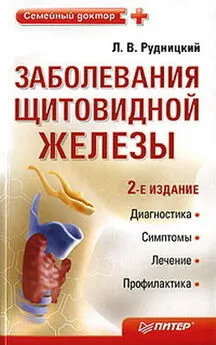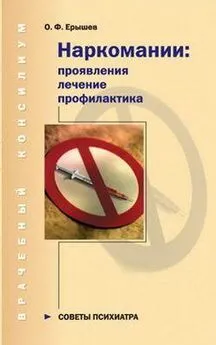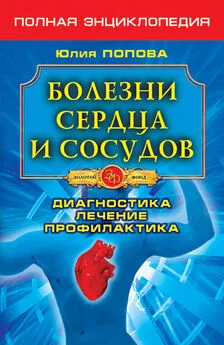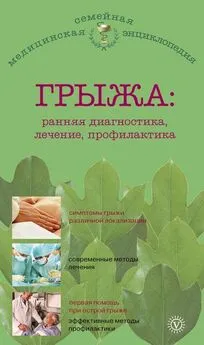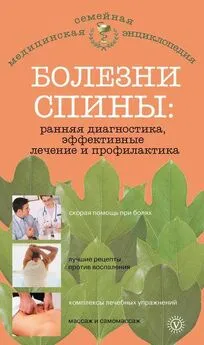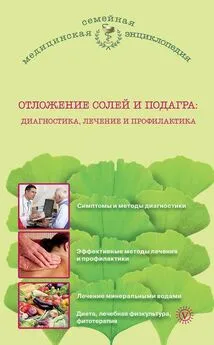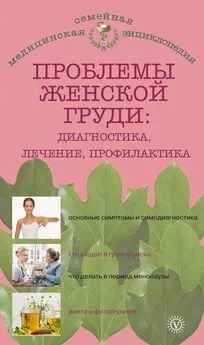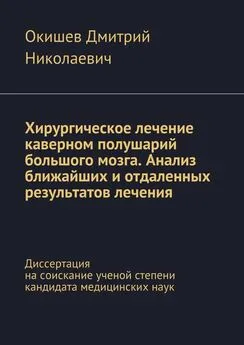Владимир Мартынов - СИБР (хирургическое лечение и профилактика)
- Название:СИБР (хирургическое лечение и профилактика)
- Автор:
- Жанр:
- Издательство:Литагент Литео
- Год:неизвестен
- ISBN:9785000717202
- Рейтинг:
- Избранное:Добавить в избранное
-
Отзывы:
-
Ваша оценка:
Владимир Мартынов - СИБР (хирургическое лечение и профилактика) краткое содержание
СИБР (хирургическое лечение и профилактика) - читать онлайн бесплатно ознакомительный отрывок
Интервал:
Закладка:
107. Wu, G. D. Linking long-term dietary patterns with gut microbial enterotypes / G. D. Wu, J. Chen, C. Hoffmann et al. // Science. – 2011. № 334. – P. 105–108.
108. Dethlefsen, L. Incomplete recovery and individualized responses of the human distal gut microbiota to repeated antibiotic perturbation / L. Dethlefsen, D. A. Relman // Proc. Natl. Acad. Sci USA. – 2011. – № 108 (Suppl. 1). – P. 4554–4561.
109. Jernberg, C. Long-term ecological impacts of antibiotic administration on the human intestinal microbiota / C. Jernberg, S. Lofmark, C. Edlund et al. // ISME J. – 2007. – № 1. – P. 56–66.
110. Hayashi, H. Molecular analysis of jejunal, ileal, caecal and recto-sigmoidal human colonic microbiota using 16S rRNA gene libraries and terminal restriction fragment length polymorphism \ H. Hayashi, R. Takahashi, T. Nishi et al. //.J Med. Microbiol. – 2005. – № 11. – P. 1093–10101.
111. Wilson, M. Microbial Inhabitants of Humans: Their Ecology and Role in Health and Disease, 1st edn. New York: Cambridge University Press, 2005.
112. Macfarlane, S. Regulation of short-chain fatty acid production / S. Macfarlane, G. T. Macfarlane // Proc. Nutr. Soc. – 2003. – № 62. – P. 67–72.
113. Rajilic-Stojanovic, M. Diversity of the human gastrointestinal tract microbiota revisited / M. Rajilic-Stojanovic, H. Smidt, W. M. de Vos // Environ Microbiol. – 2007. – № 9. – P. 2125–3216.
114. Dethlefsen, L. An ecological and evolutionary perspective on human – microbe mutualism and disease / L. Dethlefsen, M. McFallNgai, D. A. Relman // Nature. – 2007. – № 449. – P. 811–819.
115. Lapierre, P. Estimating the size of the bacterial pan-genome / P. Lapierre, J. P. Gogarten // Trends Genet. – 2009. – № 25. – P. 107–110.
116. Gill, N. The gut microbiota: challenging immunology / N. Gill, B. B. Finlay // Nat. Rev. Immunol. – 2011. – № 11. – P. 636–637.
117. Norin, E. Intestinal microflora functions in laboratory mice claimed to harbor a «normal» intestinal microflora. Is the SPF concept running out of date? / E. Norin, T. Midtvedt // Anaerobe. – 2010. – № 16. – P. 311–320.
118. Hooper, L. V. How host – microbial interactions shape the nutrient environment of the mammalian intestine / L. V. Hooper, T. Midtvedt, J. I. Gordon // Annu. Rev. Nutr. – 2002. – № 22. – P. 283–307.
119. Turnbaugh, P. J. A core gut microbiome in obese and lean twins / P. J. Turnbaugh, M. Hamady, T. Yatsunenko et al. // Nature. – 2009. – № 457. – P. 480–484.
120. Mortensen, P. B. Short-chain fatty acids in the human colon: relation to gastrointestinal health and disease / P. B. Mortensen, M. R. Clausen // Scand. J. Gastroenterol. Suppl. – 1996. – № 216. – P. 132–148.
121. Tap, J. Towards the human intestinal microbiota phylogenetic core / J. Tap, S. Mondot, F. Levenez et al. // Environ Microbiol. – 2009. – № 11. – P. 2574–2584.
122. Eckburg, P. B. Diversity of the human intestinal microbial flora / P. B. Eckburg, E. M. Bik, C. N. Bernstein et al. // Science. – 2005. – № 308. – P. 1635–1648.
123. Zoetendal, E. G. Mucosa-associated bacteria in the human gastrointestinal tract are uniformly distributed along the colon and differ from the community recovered from feces / E. G. Zoetendal, A. von Wright, T. Vilpponen-Salmela et al. // Appl. Environ Microbiol. – 2002. – № 68. – P. 3401–3407.
124. Macfarlane, S. Regulation of short-chain fatty acid production / S. Macfarlane, G. T. Macfarlane // Proc. Nutr. Soc. – 2003. – № 62. – P. 67–72.
125. Johansson, M. E. Microbiology. Keeping bacteria at a distance / M. E. Johansson, G. C. Hansson // Science. – 2011. – № 334. – P. 182–183.
126. Juge, N. Microbial adhesins to gastrointestinal mucus / N. Juge // Trends Microbiol. – 2012. – № 20. – P. 30–39.
127. Johansson, M. E. The two mucus layers of colon are organized by the MUC2 mucin, whereas the outer layer is a legislator of host – microbial interactions / M. E. Johansson, J. M. Larsson, G. C. Hansson // Proc. Natl. Acad. Sci USA. – 2011. – № 108 (Suppl. 1). – P. 4659–4665.
128. Macpherson, A. J. The immune geography of IgA induction and function / A. J. Macpherson, K. D. McCoy, F. E. Johansen // Mucosal Immunol. – 2008. – № 1. – P. 11–22.
129. McGuckin, M. A. Mucin dynamics and enteric pathogens / M. A. Guckin, S. K. Linden, P. Sutton et al. // Nat. Rev. Microbiol. – 2011. – № 9. – P. 265–278.
130. Salzman, N. H. Enteric defensins are essential regulators of intestinal microbial ecology / N. H. Salzman, K. Hung, D. Haribhai et al. // Nat. Immunol. – 2010. – № 11. – P. 76–83.
131. Vaishnava, S. The antibacterial lectin RegIIIcpromotes the spatial segregation of microbiota and host in the intestine / S. Vaishnava, M. Yamamoto, K. M. Severson et al. // Science. – 2011. – № 334. – Р. 255–258.
132. Macfarlane, G. T. The control and consequences of bacterial fermentation in the human colon / G. T. Macfarlane // J. Appl. Bacteriol. – 1991. – № 70. – P. 443–459.
133. Leitch, E. C. Selective colonization of insoluble substrates by human faecal bacteria / E. C. Leitch, A. W. Walker, S. H. Duncan // Environ Microbiol. – 2007. – № 9. – P. 667–679.
134. Walker, A. W. The species composition of the human intestinal microbiota differs between particle-associated and liquid phase communities / A. W. Walker, S. H. Duncan, H. J. Harmsen et al. // Environ Microbiol. – 2008. – № 10. – P. 3275–3283.
135. Hopkins, M. J. Nondigestible oligosaccharides enhance bacterial colonization resistance against Clostridium difficile in vitro / M. J. Hopkins, G. T. Macfarlane // Appl. Environ Microbiol. – 2003. – № 69. – P. 1920–1927.
136. Lievin, V. Bifidobacterium strains from resident infant human gastrointestinal microflora exert antimicrobial activity / V. Lievin, I. Peiffer, S. Hudault et al. // Gut. – 2000. – № 47. – P. 646–652.
137. Servin AL. Antagonistic activities of lactobacilli and bifidobacteria against microbial pathogens / A. L. Servin // FEMS Microbiol. Rev. – 2004. – № 28. – P. 405–440.
138. Flint, H. J. Interactions and competition within the microbial community of the human colon: links between diet and health / H. J. Flint, S. H. Duncan, K. P. Scott et al. // Environ Microbiol. – 2007. – № 9. – P. 1101–1111.
139. Ley, R. E. Ecological and evolutionary forces shaping microbial diversity in the human intestine / R. E. Ley, D. A. Peterson, J. I. Gordon // Cell. – 2006. – № 124. – P. 837–8348.
140. Freter, R. Mechanisms that control bacterial populations in continuous-flow culture models of mouse large intestinal flora / R. Freter, H. Brickner, M. Botney et al. // Infect. Immun. – 1983. – № 39. – P. 676–685.
141. Wilson, K. H. Role of competition for nutrients in suppression ofClostridium difficileby the colonic microflora / K. H. Wilson, F. Perini // Infect. Immun1. – 988. – № 56. – P. 2610–2614.
142. Juge, N. Microbial adhesins to gastrointestinal mucus / N. Juge // Trends Microbiol. – 2012. – № 20. – P. 30–39.
143. Camilli, A. Bacterial small-molecule signaling pathways / A. Camilli, B. L. Bassler // Science. – 2006. – № 311. – P. 1113– 1116.
144. Gantois, I. Butyrate specifically down-regulates salmonella pathogenicity island 1 gene expression / I. Gantois, R. Ducatelle, F. Pasmans et al. // Appl. Environ Microbiol. – 2006. – № 72. – P. 946–949.
145. Monack, D. M. Persistent bacterial infections: the interface of the pathogen and the host immune system / D. M. Monack, A. Mueller, S. Falkow // Nat. Rev. Microbiol. – 2004. – № 2. – P. 747–765.
146. Macpherson, A. J. The immune geography of IgA induction and function / A. J. Macpherson, K. D. McCoy, F. E. Johansen // Mucosal Immunol. – 2008. – № 1. – P. 11–22.
147. Cherrington, C. A. Short-chain organic acids at pH 5.0 killEscherichia coliandSalmonellaspp. without causing membrane perturbation / C. A. Cherrington, M. Hinton, G. R. Pearson et al. // J. Appl. Bacteriol. – 1991. – № 70. – P. 161–165.
148. Duncan, S. H. The role of pH in determining the species composition of the human colonic microbiota / S. H. Duncan, P. Louis, J. M. Thomson et al. // Environ Microbiol. – 2009. – № 11. – P. 2112–2122.
149. Shin R. Influence of intestinal anaerobes and organic acids on the growth of enterohaemorrhagic Escherichia coliO157:H7 / R. Shin, M. Suzuki, Y. Morishita // J. Med. Microbiol. – 2002. – № 51. – P. 201–206.
150. Shin, R. Bifidobacterium animalissubsp.lactis fermented milk product reduces inflammation by altering a niche for colitogenic microbes / R. Shin // Proc. Natl. Acad. Sci USA. – 2010. – № 107. – P. 18132–18137.
151. Marteyn, B. Breathing life into pathogens: the influence of oxygen on bacterial virulence and host responses in the gastrointestinal tract / B. Marteyn, F. B. Scorza, P. J. Sansonetti et al. // Cell. Microbiol. – 2011. – № 13. – P. 171–176.
152. Altier, C. Genetic and environmental control of salmonella invasion / C. J. Altier // J. Microbiol. – 2005. – P. 85–92.
153. Marteyn, B. Modulation ofShigellavirulence in response to available oxygen in vivo / B. Marteyn, N. P. West, D. F. Browning et al. // Nature. – 2010. – № 465. – P. 355–358.
154. Dobson, A. Bacteriocin production: a probiotic trait? / A. Dobson, P. D. Cotter, R. P. Ross et al. // Appl. Environ Microbiol. – 2012. – № 78. –P. 1–6.
155. Corr, S. C. Understanding the mechanisms by which probiotics inhibit gastrointestinal pathogens / S. C. Corr, C. Hill, C. G. Gahan // Adv. Food Nutr. Res. – 2009. – № 56. – P. 1–15.
156. Gong, H. S. Mode of action of plantaricin MG, a bacteriocin active againstSalmonella typhimurium / H. S. Gong, X. C. Meng, H. Wang // J. Basic. Microbiol. – 2010. – № 50 (Suppl. 1). – P. 37–45.
157. Dabard, J. Ruminococcin A, a new lantibiotic produced by a Ruminococcus gnavusstrain isolated from human feces / J. Dabard, C. Bridonneau, C. Phillipe et al. // Appl Environ Microbiol. – 2001. – № 67. – P. 4111–4118.
158. Rea, M. C. Thuricin CD, a posttranslationally modified bacteriocin with a narrow spectrum of activity againstClostridium difficile / M. C. Rea, C. S. Sit, E. Clayton et al. // Proc. Natl. Acad. Sci USA. – 2010. – № 107. – P. 9352–9357.
159. Artis, D. Epithelial-cell recognition of commensal bacteria and maintenance of immune homeostasis in the gut / D. Artis // Nat. Rev. Immunol. – 2008. – № 8. – P. 411–420.
160. Atarashi, K. ATP drives lamina propria TH17 cell differentiation / K. Atarashi, J. Nishimura, T. Shima et al. // Nature. – 2008. – № 455. – P. 808–812.
161. Satoh-Takayama, N. Microbial flora drivesinterleukin 22 production in intestinal NKp46+cells that provide innate mucosal immune defense / N. Satoh-Takayama, C. A. Vosshenrich, S. LesjeanPottier et al. // Immunity. – 2008. – № 29. – P. 958–970.
162. Iwasaki, A. Toll-like receptor control of the adaptive immune responses / A. Iwasaki, R. Medzhitov // Nat. Immunol. – 2004. – № 5. – P. 987–995.
163. Rakoff-Nahoum, S. Recognition of commensal microflora by toll-like receptors is required for intestinal homeostasis / S. RakoffNahoum, J. Paglino, F. Eslami-Varzaneh et al. // Cell. – 2004. – № 118. – P. 229–241.
164. Kawai, T. The roles of TLRs, RLRs and NLRs in pathogen recognition / T. Kawai, S. Akira // Int. Immunol. – 2009. – № 21. – P. 317–337.
Читать дальшеИнтервал:
Закладка:

